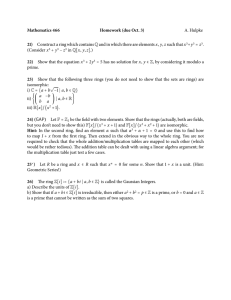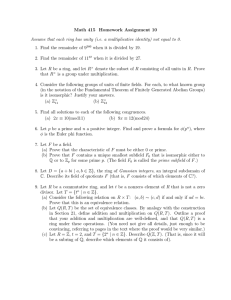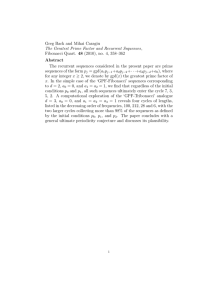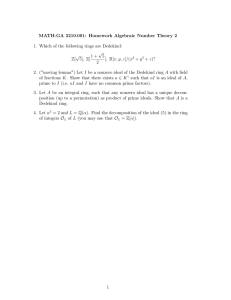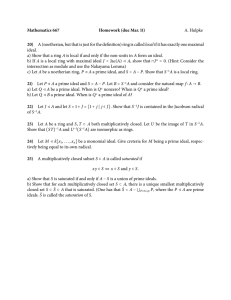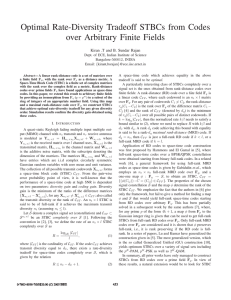Mathematics 466 Homework (due Oct. 20) 31) A. Hulpke
advertisement
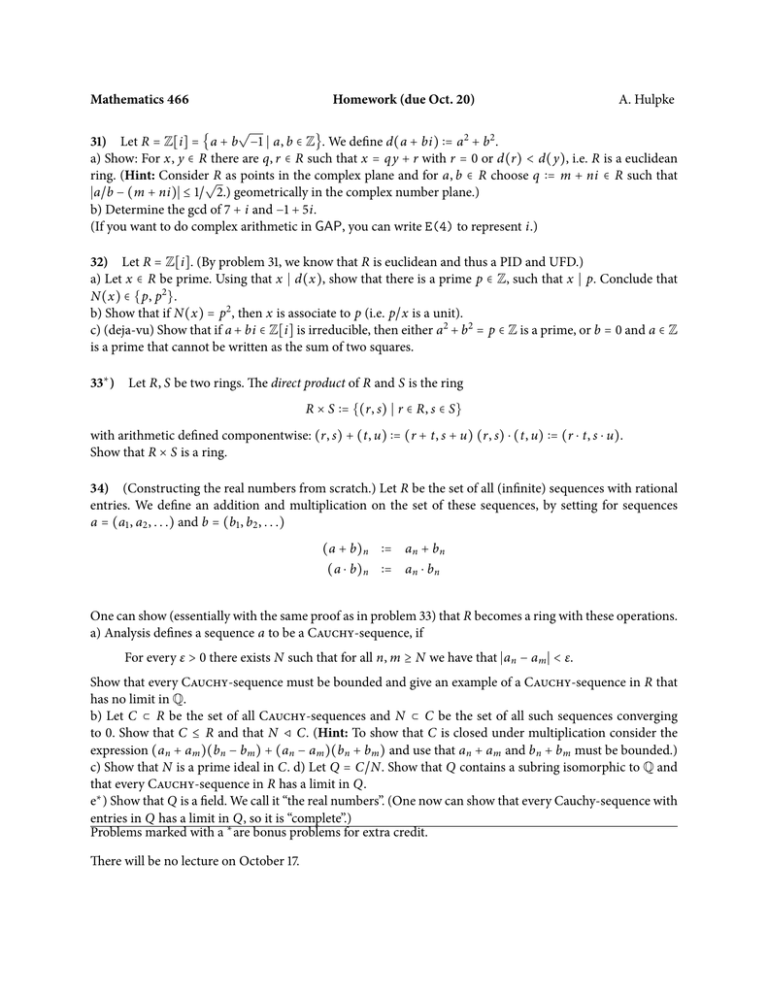
Mathematics 466
Homework (due Oct. 20)
A. Hulpke
√
31) Let R = Z[i] = {a + b −1 ∣ a, b ∈ Z}. We define d(a + bi) ∶= a 2 + b2 .
a) Show: For x, y ∈ R there are q, r ∈ R such that x = qy + r with r = 0 or d(r) < d(y), i.e. R is a euclidean
ring. (Hint: Consider√R as points in the complex plane and for a, b ∈ R choose q ∶= m + ni ∈ R such that
∣a/b − (m + ni)∣ ≤ 1/ 2.) geometrically in the complex number plane.)
b) Determine the gcd of 7 + i and −1 + 5i.
(If you want to do complex arithmetic in GAP, you can write E(4) to represent i.)
32) Let R = Z[i]. (By problem 31, we know that R is euclidean and thus a PID and UFD.)
a) Let x ∈ R be prime. Using that x ∣ d(x), show that there is a prime p ∈ Z, such that x ∣ p. Conclude that
N(x) ∈ {p, p2 }.
b) Show that if N(x) = p2 , then x is associate to p (i.e. p/x is a unit).
c) (deja-vu) Show that if a + bi ∈ Z[i] is irreducible, then either a2 + b2 = p ∈ Z is a prime, or b = 0 and a ∈ Z
is a prime that cannot be written as the sum of two squares.
33∗ ) Let R, S be two rings. The direct product of R and S is the ring
R × S ∶= {(r, s) ∣ r ∈ R, s ∈ S}
with arithmetic defined componentwise: (r, s) + (t, u) ∶= (r + t, s + u) (r, s) ⋅ (t, u) ∶= (r ⋅ t, s ⋅ u).
Show that R × S is a ring.
34) (Constructing the real numbers from scratch.) Let R be the set of all (infinite) sequences with rational
entries. We define an addition and multiplication on the set of these sequences, by setting for sequences
a = (a1 , a2 , . . .) and b = (b1 , b2 , . . .)
(a + b)n ∶= a n + b n
(a ⋅ b)n ∶= a n ⋅ b n
One can show (essentially with the same proof as in problem 33) that R becomes a ring with these operations.
a) Analysis defines a sequence a to be a Cauchy-sequence, if
For every ε > 0 there exists N such that for all n, m ≥ N we have that ∣a n − a m ∣ < ε.
Show that every Cauchy-sequence must be bounded and give an example of a Cauchy-sequence in R that
has no limit in Q.
b) Let C ⊂ R be the set of all Cauchy-sequences and N ⊂ C be the set of all such sequences converging
to 0. Show that C ≤ R and that N ⊲ C. (Hint: To show that C is closed under multiplication consider the
expression (a n + a m )(b n − b m ) + (a n − a m )(b n + b m ) and use that a n + a m and b n + b m must be bounded.)
c) Show that N is a prime ideal in C. d) Let Q = C/N. Show that Q contains a subring isomorphic to Q and
that every Cauchy-sequence in R has a limit in Q.
e∗ ) Show that Q is a field. We call it “the real numbers”. (One now can show that every Cauchy-sequence with
entries in Q has a limit in Q, so it is “complete”.)
Problems marked with a ∗ are bonus problems for extra credit.
There will be no lecture on October 17.


